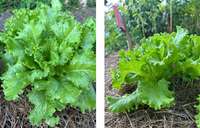
Figure 16. ‘Starfighter’ lettuce. Source: Borah Lim
Among a growing list of cool-season crops, the ECHO Global Seed Bank offers ‘Starfighter’ lettuce (Lactuca sativa) as a good choice for a fresh leafy green. It is an easy variety to grow, and you can eat it in salads, wraps, or any way you eat young leafy greens. Starfighter lettuce is a compact, loose-leaf variety (Figure 16) well suited for multiple harvests. The California Leafy Green Handler Marketing Agreement (2022) shows lettuce to be a nutritious addition to the garden, having high contents of vitamins K, A, C, and B9 (folate).
Most lettuce varieties germinate best at temperatures between 15 and 22°C (Gray, 1975). Transplant young seedlings 15-20 cm in-row and 30 cm between rows. Seedlings are typically transplanted into raised beds. For a continual harvest, plant lettuce every two to three weeks. ‘Starfighter’ lettuce is ready for harvest in 52 days, but you can harvest trimmings as they are ready and needed.
‘Starfighter’ lettuce is heat resistant, meaning it is less likely to bolt (premature flowering) when accumulated daylength and environmental stresses like temperature, lack of moisture, disease and nutrient deficiency can cause bolting in lettuce and cool season vegetable crops (Phillips et al., 2020). Lettuce grows well at high altitudes when grown in tropical climates.
Starfighter is also resistant to leaf tip burn, a nutrient imbalance, like blossom end rot in tomatoes. A localized calcium deficiency caused by unbalanced calcium uptake and transport in the plant (Smith et al., 2011) causes leaf tips to “burn”.6
‘Starfighter’ is resistant to aphids, both the currant-lettuce aphid (Nasonovia ribisnigri) and the lettuce root aphid (Pemphigus bursarius). Researchers have shown lettuces respond well to biological control for these insect pests (Mills, 2018; CABI, 2022). Companion planting with flowers such as sweet alyssum (Lobularia maritima) and pungent species such as onions have proven effective (Sobetski, 2022). These flowers provide shelter for ladybugs and lacewing larvae that feed on aphids. ‘Starfighter’ lettuce is resistant to the principal species of powdery mildew (Golovinomyces orontii). Herbivores of all kinds like to eat lettuce, so protect your garden from them.
‘Starfighter’ is a promising cultivar for meeting the needs of small farmers and gardeners worldwide. Active development workers who are members of ECHOcommunity.org may request a trial packet of this or other seed. (See the website to register as a member and learn how to order seeds.)
References
California Leafy Green Handler Marketing Agreement. 2022. Lettuce Nutrition Facts. https://lettuceinfo.org/blog/2022/04/lettuce-nutrition-facts/. Accessed 12 October 2022.
Commonwealth Agricultural Bureau International (CABI). 2022. Nasonovia ribisnigri. In: Invasive Species Compendium. https://www.cabidigitallibrary.org/. Search term: currant-lettuce aphid. Accessed 10 October 2022.
Gray, D. 1975. Effects of Temperature on the Germination and Emergence of Lettuce (Lactuca sativa, L.) Varieties. Journal of Horticultural Science 50:349-361.
Mills, N.J. 2018. Plant Health Management: Biological Control of Insect Pests, In: Reference Module in Food Science. Elsevier.
Phillips, B., Goldy, R. and Brainard, D. 2020. Bolting in Spring Vegetables. Michigan State University Extension and Department of Horticulture. https://www.canr.msu.edu/news/bolting-in-spring-vegetables. Accessed 14 December 2022.
Smith, R., T. Hartz and R. Hayes. 2011. Overview of Tipburn of Lettuce.https://ucanr.edu/blogs//blogcorepostdetail.cfm?postnum=5608.Acessed 11 October 2022.
Sobetski, H. 2022. Personal communication.
Cite this article as:
Walle, R. 2023. 'Starfighter Lettuce.' ECHO Development Notes no. 158.